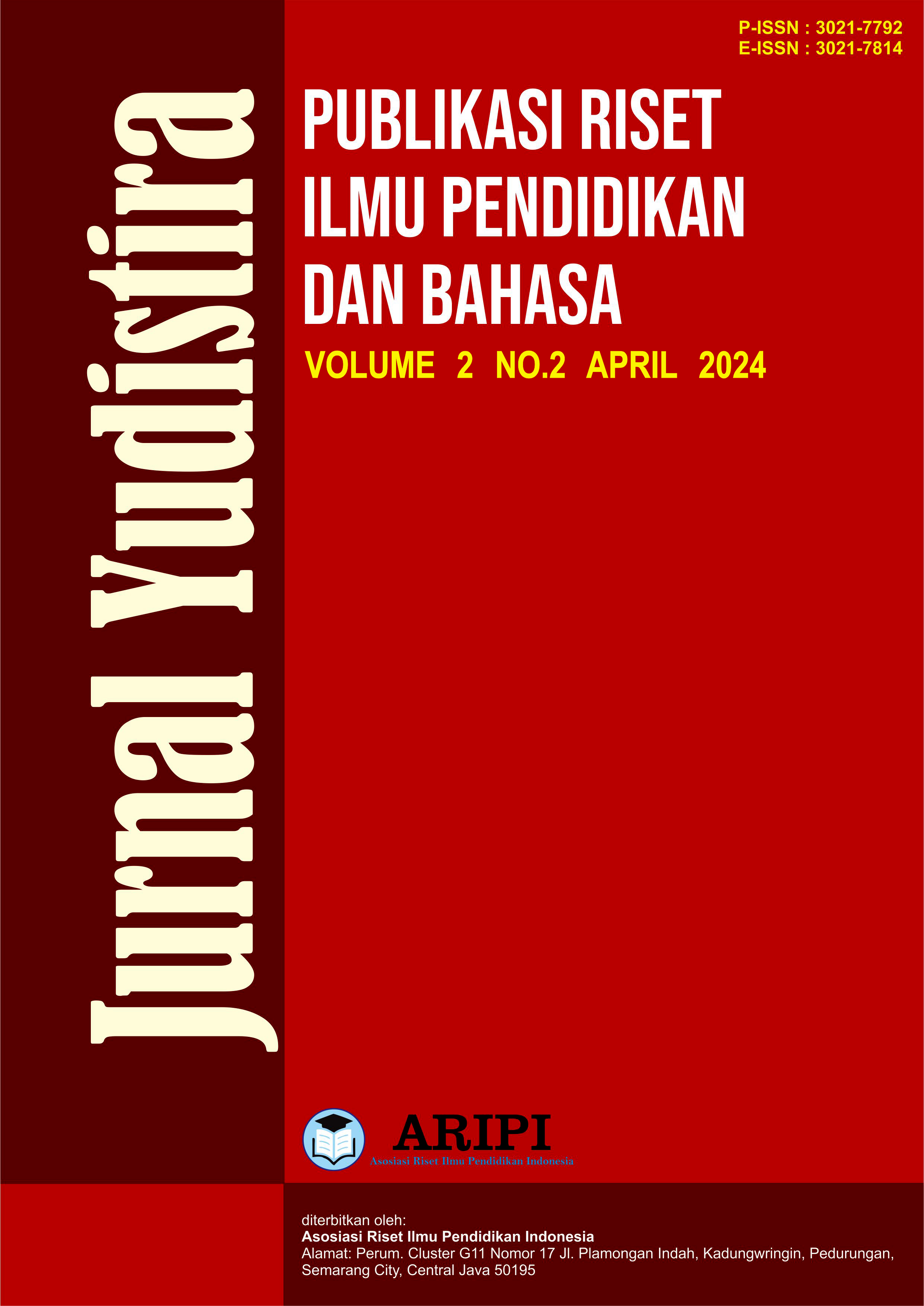Pengaruh Model Pembelajaran Scramble Terhadap Motivasi Belajar Siswa Kelas 2 SD Negeri 1 Kualasimpang
DOI:
https://doi.org/10.61132/yudistira.v2i2.655Keywords:
Scramble Learning Model, Learning Motivation, StudentAbstract
The learning motivation of grade 2 students at SD Negeri 1 Kualasimpang is still relatively low. This is shown by the lack of enthusiasm of students in participating in learning. This research aims to determine the effect of the Scramble learning model on the learning motivation of grade 2 students at SD Negeri 1 Kualasimpang. This research uses a quasi-experimental research design with a pre-test and post-test design approach. The research sample was 25 grade 2 students at SD Negeri 1 Kualasimpang. The research instrument used was a student learning motivation questionnaire sheet. The results of the research show that there is a significant influence between the Scramble learning model on the learning motivation of grade 2 students at SD Negeri 1 Kualasimpang. This is proven by the sig (2-tailed) value of 0.000 < 0.05. This research concludes that the Scramble learning model can increase the learning motivation of grade 2 elementary school students. The Scramble learning model can be an alternative learning model that can be applied by teachers to increase student learning motivation.
Downloads
References
Arikunto, S. (2010). Penelitian tindakan kelas. Jakarta: Bumi Aksara.
Borg, W. R., & Gall, M. D. (1983). Educational research: An introduction (5th ed.). New York: Longman.
Burns, A. (2007). Action research. London: Sage Publications.
Depdiknas. (2004). Panduan pengembangan standar isi, standar kompetensi lulusan, dan silabus. Jakarta: Depdiknas.
Elliott, J. (1991). Action research for educational change. Buckingham: Open University Press.
Kagan, S. (1992). Cooperative learning. San Juan Capistrano, CA: Kagan Publishing.
Kemmis, S., & McTaggart, R. (1988). The action research planner. Geelong, Victoria: Deakin University Press.
Kemendikbud. (2013). Permendikbud Nomor 65 Tahun 2013 tentang Standar Isi untuk Pendidikan Dasar dan Menengah. Jakarta: Kemendikbud.
Kemendikbud. (2014). Permendikbud Nomor 103 Tahun 2014 tentang Penilaian Hasil Belajar oleh Pendidik pada Pendidikan Dasar dan Menengah. Jakarta: Kemendikbud.
Lewin, K. (1948). Resolving social conflicts. New York: Harper & Brothers.
Sugiyono, (2017). Metode penelitian pendidikan: Pendekatan kuantitatif, kualitatif, dan R&D. Bandung: Alfabeta.
Silaban, P. J. (2019). Penerapan Model Pembelajaran Inkuiri untuk Meningkatkan Hasil Belajar Siswa pada Mata Pelajaran Matematika di Kelas VI SD Negeri 066050 Medan Tahun Pembelajaran 2018/2019. Jurnal Ilmiah Aquinas, 2(1), 107-126.
Silaban, P. J. (2015). Meningkatkan Motivasi Dan Kemampuan Pemahaman Matematis Siswa Melalui Pembelajaran Kooperatif Tipe Tgt Berbantuan Alat Peraga Pada Mata Pelajaran Matematika Di Kelas Vi Sd Methodist-12 Medan Tahun Ajaran 2014 (Doctoral dissertation, UNIMED).
Silaban, P. J., & Hasibuan, A. (2021). Hubungan Lembar Kerja Peserta Didik Berbasis Cat Terhadap Kemampuan Pemahaman Matematis Siswa. Jurnal Ilmiah Aquinas, 4(1), 48-59.
Sulaiman, Astutik. “Penerapan Media Permainan Dakon Dalam Peningkatan Hasil Belajar Berhitung Siswa Kelas 1 Sd Al-Amin Surabaya.” Jurnal Penelitian Pendidikan Guru Sekolah Dasar 1, no. 1 (2013): 1–7.
Downloads
Published
How to Cite
Issue
Section
License
Copyright (c) 2024 Jurnal Yudistira : Publikasi Riset Ilmu Pendidikan dan Bahasa

This work is licensed under a Creative Commons Attribution-ShareAlike 4.0 International License.






